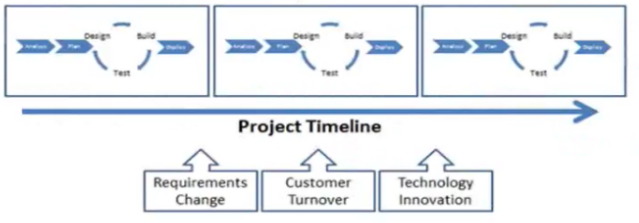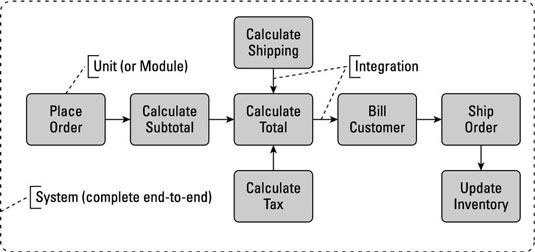Types of documents for Business Analyst
There are various types of documentation created by a Business Analyst. Being a analyst documentation is a primary task they should be good and skilled at. Documentation would vary from phase/stage of the product/project they are on.
i.e. If they are drafing the requirement and need to have external staekholders approval to freeze it than it is called as BRD/BRS.
In other words, the type and specifications a business analyst is expected to create in an organization depends upon many parameters like organization’s processes and policies, need and expectations of the business, and the stakeholder requirements.
Below are the common documents a business analyst is expected to create and they are extensively used throughout the course of a project. Each of these documents has a specific template and it’s a part of the overall project documentation. The documents are:
- Project vision Document
- Requirement Management Plan
- User stories
- Business Requirement Document
- Requirement traceability matrix (RTM)
- Functional requirement specification (FRS)/ Functional Specification Document (FSD)
- System requirement specification (SRS)/ System Requirement Document (SRD)
- Project vision Document
- Introduction
- Description of users in the system
- Project stakeholders
- Product Overview
- Product Features
- Product requirements
- Constraints/Limitations
- Quality/documentation requirements
- Requirement Management Plan
- Purpose of plan
- Responsibility assignment
- Tools and procedures to be used
- Approach towards defining requirements
- Approach towards Requirements Traceability
- Workflows and Activities
- Change Management
- User stories
- The system shall be able to sort the values in ascending and descending order.
- The application must allow the user to enter his name, date of birth and address.
- The system shall verify the login credentials of the user and redirect him to the dashboard in case of successful login.
- Business Requirement Document
- Project Background
- Business goals and objectives
- Stakeholders
- Requirement scope
- Functional requirements
- Data requirements
- Non-functional requirements
- Interface requirements
- Business glossary/Definitions
- Dependencies of existing systems
- Assumptions
- Requirement traceability matrix (RTM)
- Requirement ID
- Requirement Description
- Functional Requirement
- Status
- Architectural/Design Document
- Technical Specification
- Software Module
- Test Case Number
- Tested In
- Functional requirement specification (FRS)/ Functional Specification Document (FSD)
- Product Context
- Assumptions
- Constraints
- Dependencies
- Functional Requirements
- User Interface Requirements
- Usability
- Performance
- Manageability/Maintainability
- System Interface/Integration
- Security
- Requirements Confirmation/sign-off
- System requirement specification (SRS)/ System Requirement Document (SRD)
- Product Perspective
- Product Functions
- User Characteristics
- General Constraints
- Assumptions and Dependencies
- External Interface Requirements
- Functional Requirements
- Classes / Objects
- Non-Functional Requirements
- Inverse Requirements
- Design Constraints
- Sequence Diagrams
- Data Flow Diagrams (DFD)
- State-Transition Diagrams (STD)
- Change Management Process
Although mainly the client/project manager creates a project vision document, business analyst are also expected to contribute to this document. A Project vision document entails the purpose and intent of the product/software to be developed and describes on a high level ‘what’ business objective will be achieved.
The Project vision document contains:
IBM Vision Document
Project vision Document
The Requirements Management plan is used to document the necessary information required to effectively manage project requirements from project initiation till delivery. The Requirements Management Plan is created during the Planning Phase of the project. Its intended audience is the project manager, project team, project sponsor and any senior leaders whose support is needed to carry out the plan.
The Requirement Management Plan contains:
In agile development environment, a user story is a document describing the functionality a business system should provide and are written from the perspective of an end user/customer/client. The user stories are not very descriptive and only captures ‘who’, ‘what’ and ‘why’ of a requirement in limited detail. If any requirement is too big for a single user story it’s broken down into a number of user stories making it easier for estimation and discussion. In such cases, the main user story will act as an Epic (parent) user story.
Some examples of user stories are:
User stories
A Business Requirement Document is created to describe the business requirements of a product/process and the intended end result that is expected from the product/process. It is one of the most widely accepted project requirement document and is referred throughout the development life-cycle for any project.
A BRD mainly focusses on answering ‘what is the business solution’ as opposed to ‘how to achieve the business solution’ and thus it’s mainly centered around the business requirements. A BRD is created with the help of the project team (BA, client, subject matter exerts, business partners) and is also used as a communication tool for other stakeholders/external service providers.
The Business Requirement Document contains:
A Requirement traceability matrix is used to record and track the relationship of the project requirements to the design, documentation, development, testing and release of the project/product. This is done by maintaining an excel sheet which lists the complete user and system requirements for the system (in form of use cases) which are in-turn mapped to the respective documents like Functional Requirement, Design Document, Software Module, Test Case Number, etc.
A RTM is maintained throughout the lifecycle of the various releases in a project and it’s a vital document to track project scope, requirements and changes in any project.
The Business Requirement Document contains:
Guru99 Requirement matrix
A Functional requirement specification or Functional Specification Document describes the intended behavior of a system including data, operations, input, output and the properties of the system.
In a BRD the requirements are high level but in a FRS/FSD they are written in much more details to capture each and every aspect of a requirement. Thus a functional specification document becomes a more technical, accurate and descriptive requirement document. Owing to their technical nature, FRS/FSD are equally used by developers, testers and the business stakeholders of a project.
The Functional requirement specification (FRS)/Functional Specification Document (FSD) contains:
A detailed document containing information about ‘how’ the complete system has to function and enumerates hardware, software, functional and behavioral requirements of the system. This document elaborates the requirements from the perspective of observational behavior only and doesn’t consider technical or design bias.
The System requirement specification (SRS)/ System Requirement Document (SRD) contains:
SRS Document SRS Template
itest.sourceforge
So this are the types of documents a Business Analyst should be aware of as depending from domain/organization required documents would differ.
Do comment your feedback / request , subscribe, follow. Thank you for reading



Thanks for sharing a valuable blog. keep sharing.
ReplyDeleteskills needed for data scientist
list of latest technologies
job opportunities after ccna certification
best job oriented courses
cyber security interview questions and answers
java interview questions for experienced
Your details are excellent. We should look tableau training
ReplyDeleteThe article, which you have shared here . Your article is very informative and useful for enhancing the knowledge. Thanks for sharing this article here. fake italian drivers license
ReplyDeleteI read this article, it is really informative one. Your way of writing and making things clear is very impressive. Thanking you for such an informative article.fake drivers license florida site.
ReplyDeleteI am attracted by the presentation of this article. This information aboutonline fake us drivers license generatoris really good. I really appreciate your work. It is a gainful article for us. Keep posting. Thank you.
ReplyDeleteI am glad to see your article. Very interesting to read your article. Prepare to ace Class 12 with our specialized online home tuition classes! We tackle the intricacies of Modern Physics, conquer Differential Equations, and explore Ecology, empowering you to excel in these critical subjects.
ReplyDeleteBook A Free Demo Today visit Online tutoring sites for class 12